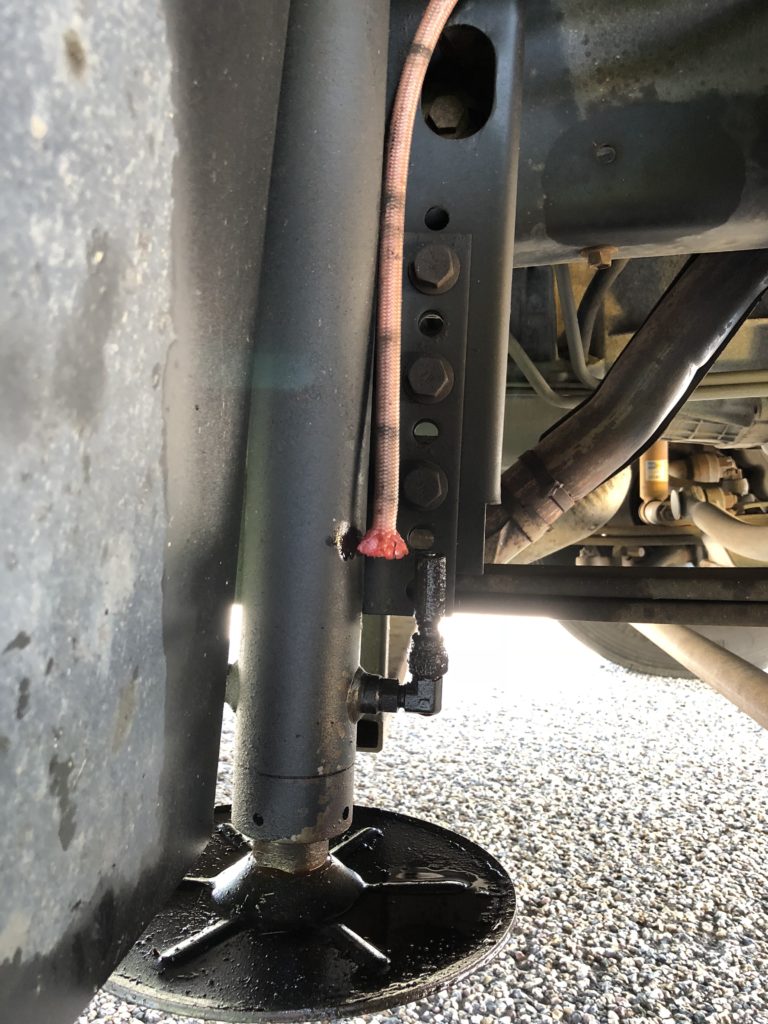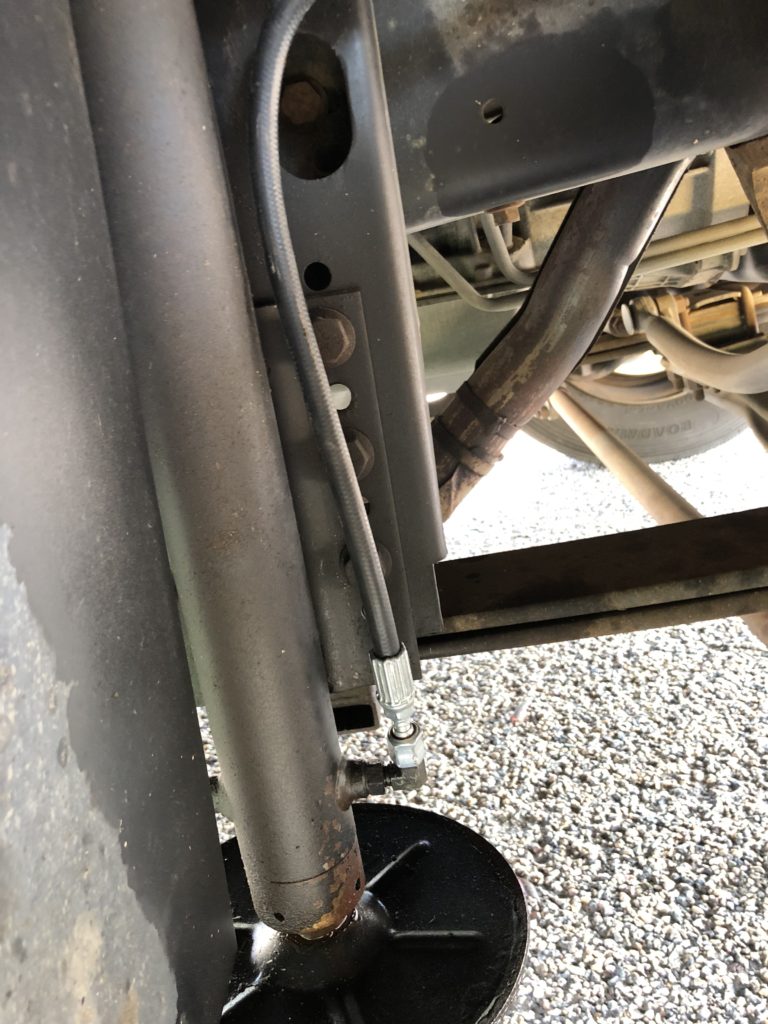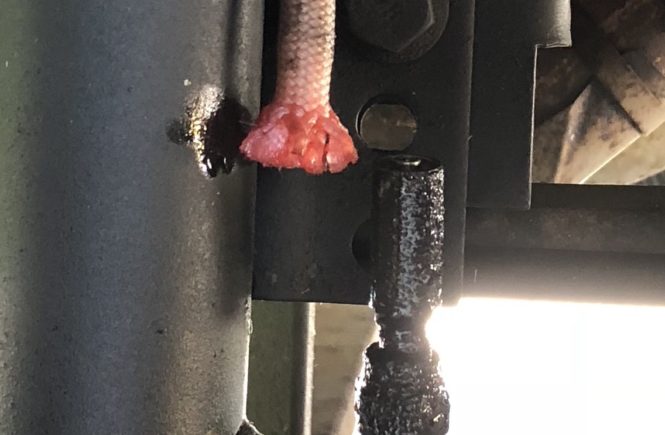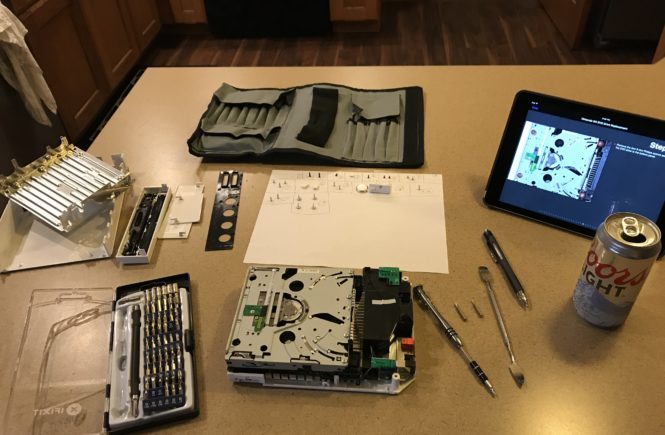We recently bought a used RV, which I expect will result in quite a few future posts. A breakdown this weekend provided my first “opportunity” for a new DIY post.
As we pulled away from home on our way to the greatest place on Earth, my leveling system sounded an alarm that the jacks were down. I stopped to check, and they weren’t. I drove around the block once, and the alarm continued. I got out to check again, and it looked like someone had been murdered under my RV: red liquid was running out from beneath it.
The culprit was easy to identify–one of the hydraulic lines running to the front-right leveling jack broke where it attached to the coupling.

We decided to continue on to the campsite and do our best to level the RV without use of the jacks. When we got home, I followed the broken hydraulic line, which ran from the front-right jack to the front-left jack. I unscrewed it from the both jacks and cut the zip ties that were used to run it along the chassis. I took the broken 7′ line to my local auto parts dealer–Zander Auto Parts. They were very helpful, building me a new hydraulic line in about 10 minutes for less than $50.
(OK, so I didn’t DO that part, but in order to build your own hydraulic line you need a special crimping machine to crimp the couplings to the hydraulic line. Those can run a couple hundred to several thousand dollars, and then you still need expensive individual dies for whatever size of coupling you are crimping. I’m happy to support a local business when such a tool is necessary to complete the job.)
LCI’s Installation and Service Manual recommended tightening the fittings to no more than 30 in-lb, but I didn’t have a torque wrench that I could use to verify. I did my best to tighten them to the extent they were when I took them off.
Once installed, I fired up the RV and the leveling system continued to show that the jacks were down. This was expected, as the broken line leaked a lot of hydraulic fluid, and the manual shows this as an indication of low fluid levels. After adding two quarts of automatic transmission fluid, as recommended by the manual, the error went away.
With the new line in place and no alarm going off, I manually lowered and raised the front and back jacks to bleed any air out of the system and then ran the automatic leveling program. It worked!




